In computer science, a memory leak is a type of resource leak that occurs when a computer program incorrectly manages memory allocations in a way that memory which is no longer needed is not released. A memory leak may also happen when an object is stored in memory but cannot be accessed by the running code. A memory leak has symptoms similar to a number of other problems and generally can only be diagnosed by a programmer with access to the program's source code.
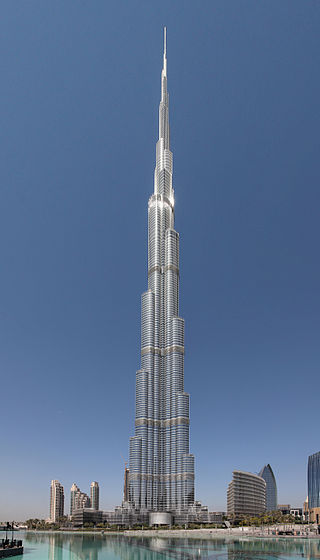
A skyscraper is a tall continuously habitable building having multiple floors. Modern sources currently define skyscrapers as being at least 100 metres (330 ft) or 150 metres (490 ft) in height, though there is no universally accepted definition. Skyscrapers are very tall high-rise buildings. Historically, the term first referred to buildings with between 10 and 20 stories when these types of buildings began to be constructed in the 1880s. Skyscrapers may host offices, hotels, residential spaces, and retail spaces.

The Petronas Towers, also known as the Petronas Twin Towers or KLCC Twin Towers, are 88-storey supertall skyscrapers in Kuala Lumpur, Malaysia, standing at 451.9 metres. From 1998 to 2003, they were officially designated as the tallest buildings in the world until they were surpassed by the 2004 completion of the Taipei 101. The Petronas Towers are the world's tallest twin skyscrapers and remained as the tallest buildings in Malaysia until 2022, when they were surpassed by the Merdeka 118. The Petronas Towers are a major landmark of Kuala Lumpur, along with the nearby Kuala Lumpur Tower and Merdeka 118, and are visible in many places across the city.

BattleBots is an American robot combat television series. The show was an adaptation of the British show Robot Wars, in which competitors design and operate remote-controlled armed and armored machines designed to fight in an arena combat elimination tournament. For five seasons, BattleBots aired on the American Comedy Central and was hosted by Bil Dwyer, Sean Salisbury, and Tim Green. Comedy Central's first season premiered on August 23, 2000, and its fifth and last season ended on December 21, 2002. The show was in hiatus until it was revived on ABC in 2015.

One Canada Square is a skyscraper in Canary Wharf, London. It was completed in 1991 and is the third tallest building in the United Kingdom at 770 feet (235 m) above ground level containing 50 storeys.
Eureka Tower is a 297.3 m (975 ft) skyscraper located in the Southbank precinct of Melbourne, Victoria, Australia. Construction began in August 2002 and the exterior was completed on 1 June 2006. The plaza was finished in June 2006 and the building was officially opened on 11 October 2006. The project was designed by Melbourne architectural firm Fender Katsalidis Architects and was built by Grocon. The developer of the tower was Eureka Tower Pty Ltd, a joint venture consisting of Daniel Grollo (Grocon), investor Tab Fried and one of the Tower's architects Nonda Katsalidis. It was the world's tallest residential tower when measured to its highest floor, until surpassed by Ocean Heights and the HHHR Tower in Dubai. From 2006 to 2019, it was the tallest building in Melbourne, until the topping out of Australia 108. It is currently the third tallest building in Australia, behind the Q1 in Queensland and Australia 108, as well as the second tallest to roof behind the latter skyscraper. As of 2016 it was the 15th tallest residential building in the world.
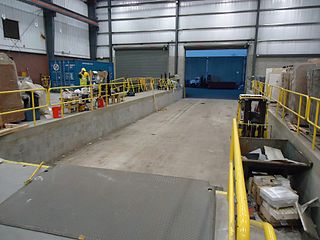
A warehouse is a building for storing goods. Warehouses are used by manufacturers, importers, exporters, wholesalers, transport businesses, customs, etc. They are usually large plain buildings in industrial parks on the outskirts of cities, towns, or villages.

The Lockheed Martin X-35 is a concept demonstrator aircraft (CDA) developed by Lockheed Martin for the Joint Strike Fighter program. The X-35 was declared the winner over the competing Boeing X-32 and a developed, armed version went on to enter production in the early 21st century as the F-35 Lightning II.
Discovery Channel is a Canadian specialty television channel owned by CTV Speciality Television Inc. (a joint venture between Bell Media/ESPN Inc. and Warner Bros. Discovery.
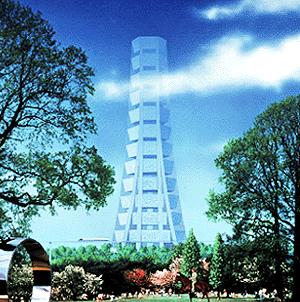
Sky City 1000 is a proposed skyscraper for the Tokyo metropolitan area. It was announced in 1989 at the height of the Japanese asset price bubble.

The X-38 was an experimental re-entry vehicle designed by NASA to research a possible emergency crew return vehicle (CRV) for the International Space Station (ISS). The 1995–2002 program also developed concepts for a crew return vehicle design that could be modified for other uses, such as a possible joint U.S. and international human spacecraft that could be launched on the French Ariane 5 booster.

Science North is an interactive science museum in Greater Sudbury, Ontario, Canada.
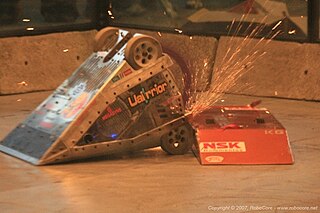
Robot combat is a mode of robot competition in which custom-built machines fight using various methods to incapacitate each other. The machines have generally been remote-controlled vehicles rather than autonomous robots.
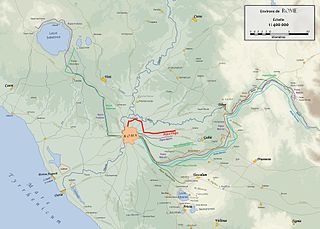
The Aqua Virgo was one of the eleven Roman aqueducts that supplied the city of ancient Rome. It was completed in 19 BC by Marcus Agrippa, during the reign of the emperor Augustus and was built mainly to supply the contemporaneous Baths of Agrippa in the Campus Martius.

A river rapids ride is an amusement ride that simulates whitewater rafting.
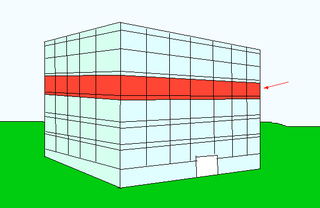
A storey or story is any level part of a building with a floor that could be used by people. Plurals for the word are storeys (UK) and stories (US).

An elevator or lift is a cable-assisted, hydraulic cylinder-assisted, or roller-track assisted machine that vertically transports people or freight between floors, levels, or decks of a building, vessel, or other structure. They are typically powered by electric motors that drive traction cables and counterweight systems such as a hoist, although some pump hydraulic fluid to raise a cylindrical piston like a jack.
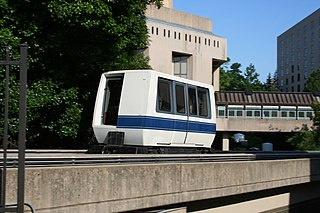
A hovertrain is a type of high-speed train that replaces conventional steel wheels with hovercraft lift pads, and the conventional railway bed with a paved road-like surface, known as the track or guideway. The concept aims to eliminate rolling resistance and allow very high performance, while also simplifying the infrastructure needed to lay new lines. Hovertrain is a generic term, and the vehicles are more commonly referred to by their project names where they were developed. In the UK they are known as tracked hovercraft, in the US they are tracked air-cushion vehicles. The first hovertrain was developed by Jean Bertin (1917-1975) in France, where they were marketed as the Aérotrain before being abandoned by the French government.

The Bell V-280 Valor is a tiltrotor aircraft being developed by Bell and Lockheed Martin for the United States Army's Future Vertical Lift (FVL) program. The aircraft was officially unveiled at the 2013 Army Aviation Association of America's (AAAA) Annual Professional Forum and Exposition in Fort Worth, Texas. The V-280 made its first flight on 18 December 2017 in Amarillo, Texas.

A super heavy-lift launch vehicle can lift to low Earth orbit more than 50 metric tons (110,000 lb) by United States (NASA) classification or 100 metric tons (220,000 lb) by Russian classification. It is the most capable launch vehicle classification by mass to orbit, succeeding the heavy-lift launch vehicle classification. Crewed lunar and interplanetary missions are often developed around these launch vehicles' payload capacity.
















